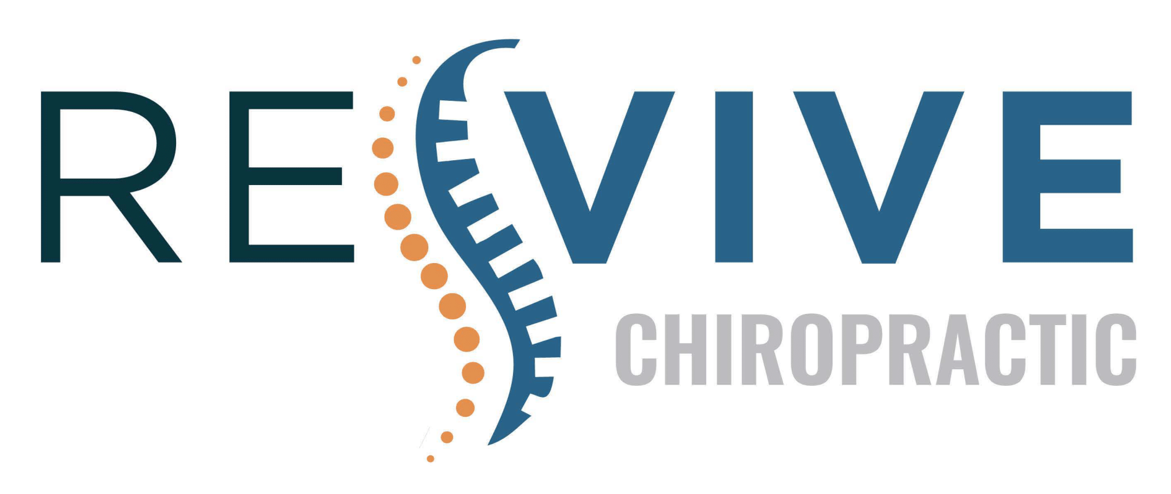If you're struggling with chronic back pain, you're not alone, and there are proven remedies that can help. You might find that simple lifestyle changes, targeted physical therapy, or even alternative therapies can provide significant relief. Whether you're looking for effective exercises or considering supplements, understanding your options is essential. Each approach has its own benefits, but knowing which combination works best for you can make all the difference. So, what are the most effective strategies to ease your discomfort and improve your daily life?
Understanding Chronic Back Pain
Chronic back pain is more than just a discomfort; it's a persistent condition that can greatly impact your daily life. You might find it hard to perform everyday tasks, and the pain can affect your mood, sleep, and overall well-being. Understanding what chronic back pain is and its causes is vital for managing it effectively.
Chronic back pain typically lasts longer than three months and can arise from various factors. You may have experienced an injury, developed a medical condition, or even have poor posture contributing to your discomfort. Conditions like herniated discs, arthritis, or spinal stenosis can lead to ongoing pain, and it's important to identify the root cause to find the right relief.
In addition to physical factors, emotional and psychological aspects can also play a significant role in chronic back pain. Stress or anxiety might heighten your perception of pain, making it feel more intense. It's important to recognize that your mental state can influence your physical health.
When you understand chronic back pain, you can begin to take steps toward relief. Knowledge empowers you to seek the appropriate treatments, whether those involve medical intervention or alternative therapies.
You might also want to reflect on discussing your symptoms with a healthcare professional, who can guide you on the best course of action tailored to your specific needs. Essentially, understanding your pain is the first step toward reclaiming your life from its grip.
Lifestyle Modifications
Finding effective relief from chronic back pain often requires more than just medical treatment; lifestyle modifications can play a significant role in managing your condition. By making some intentional changes to your daily habits, you can reduce pain and improve your overall quality of life.
First, pay attention to your posture. Whether you're sitting at a desk or standing in line, maintaining proper alignment can alleviate pressure on your spine. Invest in supportive chairs and consider ergonomic tools that promote good posture.
Next, incorporate regular physical activity into your routine. Low-impact exercises, like walking or swimming, can strengthen your back and core muscles without putting too much strain on your body. Aim for at least 30 minutes of activity most days of the week to keep your muscles engaged and flexible.
Additionally, focus on maintaining a healthy weight. Carrying excess weight can increase strain on your back, so adopting a balanced diet can help you shed those extra pounds. Incorporate plenty of fruits, vegetables, lean proteins, and whole grains into your meals.
Lastly, prioritize your sleep. A good night's rest is essential for healing. Use a mattress that provides the right support, and try to sleep on your side with a pillow between your knees to maintain spinal alignment.
Physical Therapy Techniques
When it comes to managing back pain, physical therapy techniques can be incredibly beneficial. These techniques focus on improving your strength, flexibility, and overall function, which can help alleviate pain and prevent future issues.
One effective method you'll likely encounter is targeted exercises. A physical therapist can design a personalized exercise program that strengthens your core and back muscles, promoting better posture and support for your spine.
Manual therapy is another powerful technique. Your therapist may use hands-on methods to manipulate your spine and surrounding tissues, helping to alleviate tension and improve mobility. Techniques like myofascial release or joint mobilization can be particularly effective in relieving discomfort.
Stretching is also key in physical therapy. Regular stretching can enhance flexibility and reduce muscle tightness, making it easier for you to move without pain. Your therapist will teach you specific stretches that target the muscles contributing to your back pain.
Additionally, modalities such as heat, ice, or electrical stimulation may be used during your sessions. These can help reduce inflammation and promote blood flow, speeding up your recovery process.
Lastly, your therapist will guide you on proper body mechanics and ergonomics, providing strategies to protect your back during daily activities.
Medications and Supplements
Medications and supplements can play an essential role in managing back pain, offering relief and support in conjunction with other treatments. Over-the-counter (OTC) pain relievers like ibuprofen or acetaminophen can reduce inflammation and alleviate discomfort. When these aren't enough, your doctor might prescribe stronger medications, such as muscle relaxants or opioids, but always use them cautiously, as they can lead to dependencies.
In addition to traditional medications, certain supplements may help in easing back pain. For instance, omega-3 fatty acids, found in fish oil, have anti-inflammatory properties that could benefit you. Turmeric, which contains curcumin, is another natural option; it may reduce inflammation and pain. You might also consider glucosamine and chondroitin, which some studies suggest could improve joint health.
Before starting any new medication or supplement, it's vital to consult with your healthcare provider. They'll help you determine the right dosages and guarantee there are no interactions with your current medications.
Keep in mind that while these remedies can provide relief, they're often most effective when combined with other treatments, like physical therapy or lifestyle changes.
Finally, don't overlook the importance of monitoring your body's response. If you notice any side effects or if your pain persists despite treatment, reach out to your healthcare provider for further evaluation. Your journey to relief from chronic back pain may involve some trial and error, but the right approach can lead to significant improvements in your quality of life.
Alternative Therapies
When it comes to managing chronic back pain, alternative therapies like acupuncture and chiropractic adjustments can offer significant relief.
You might find that these methods not only alleviate pain but also improve your overall well-being.
Let's explore how these therapies can work for you.
Acupuncture for Pain Relief
Acupuncture offers a holistic approach to alleviating chronic back pain, tapping into the body's innate healing abilities. By inserting thin needles into specific points, it helps stimulate energy flow, or "qi," promoting relaxation and reducing pain. You might find that this ancient practice not only eases discomfort but also enhances your overall well-being.
Many individuals report significant improvements in their back pain after just a few sessions. The treatment can help reduce inflammation, improve circulation, and release endorphins, which are natural painkillers.
It's important to work with a licensed acupuncturist who understands your specific needs and can tailor the treatment accordingly.
While the idea of needles might seem intimidating, most people experience minimal discomfort during the process. You'll likely feel a sense of calm and relaxation as the treatment progresses.
Sessions typically last between 30 to 60 minutes, and you may notice benefits after the first visit.
If you're looking for a non-invasive, drug-free option to manage your chronic back pain, consider giving acupuncture a try. It might just be the relief you've been searching for.
Chiropractic Adjustments Benefits
Chiropractic adjustments can really turn things around for those struggling with chronic back pain. These hands-on techniques focus on aligning your spine and enhancing your body's natural ability to heal. When you visit a chiropractor, they assess your posture, movement, and overall spinal health. This personalized approach helps address the root cause of your pain, not just the symptoms.
One of the main benefits of chiropractic care is its ability to improve mobility. You may find that after just a few sessions, you can move more freely and with less discomfort. Additionally, chiropractic adjustments can reduce inflammation and muscle tension, leading to a significant decrease in pain.
Another advantage is the holistic nature of chiropractic care. Your chiropractor may also provide you with exercises, stretches, and lifestyle advice to support your recovery and prevent future issues. This all-encompassing approach empowers you to take control of your health.
If you're seeking a non-invasive option for chronic back pain relief, chiropractic adjustments could be the answer. By promoting spinal health, you'll likely experience improved function and a better quality of life.
Don't hesitate to explore this effective alternative therapy!
Mind-Body Approaches
Mind-body approaches can greatly help you manage chronic back pain.
Techniques like meditation, yoga, and guided imagery not only promote relaxation but also empower you to take control of your pain.
Meditation and Mindfulness Practices
Discovering relief from chronic back pain can often feel like an uphill battle, but incorporating meditation and mindfulness practices into your routine might just be the key to revealing a more peaceful state of being. These techniques can help you manage pain by reducing stress and promoting relaxation, which are essential for healing.
Start by setting aside a few minutes each day for meditation. Find a quiet space, close your eyes, and focus on your breath. As thoughts arise, acknowledge them without judgment and gently return your attention to your breathing. This practice helps cultivate awareness and can shift your focus away from pain.
Mindfulness, on the other hand, encourages you to stay present in the moment. Throughout your day, try to be aware of your body and its sensations. When discomfort arises, instead of reacting negatively, observe it with curiosity. This can reduce the emotional burden of pain and help you respond more effectively.
As you integrate these practices into your daily life, you may find an increased sense of control over your pain, leading to greater overall well-being. The journey toward relief is ongoing, but meditation and mindfulness can be powerful allies in your quest for comfort.
Yoga for Pain Relief
If you're looking to ease chronic back pain, incorporating yoga into your routine can really help. Yoga combines physical postures, breathing techniques, and mindfulness, creating a holistic approach to pain relief. By practicing specific poses, you can increase your flexibility, strengthen your core, and improve your posture, all of which play a significant role in reducing back pain.
Start with gentle stretches like Child's Pose or Cat-Cow to relieve tension and promote relaxation. These poses help you connect your movements with your breath, increasing awareness of your body.
As you progress, consider incorporating poses like Downward Dog or Bridge, which can strengthen the muscles supporting your spine.
It's essential to listen to your body. If a pose causes discomfort, modify it or skip it entirely. Consistency is key; aim for a few sessions each week.
Not only will yoga help alleviate physical pain, but it can also reduce stress and anxiety, which often exacerbate chronic pain. Over time, you'll likely notice improvements in your overall well-being and a decrease in your back pain.
Guided Imagery Techniques
In addition to physical practices like yoga, guided imagery techniques can be a powerful tool for managing chronic back pain. This mind-body approach helps you visualize calming scenes and sensations, promoting relaxation and reducing pain perception. By engaging your imagination, you can create a mental escape from discomfort.
To get started, find a quiet space where you won't be disturbed. Close your eyes and take deep, slow breaths. Picture a serene location, like a beach or a forest, and immerse yourself in the sights, sounds, and smells of that place. As you visualize this scene, focus on how your body feels—imagine warmth or light easing the tension in your back.
You can enhance this practice by incorporating positive affirmations or phrases that resonate with you. Repeat these affirmations during your imagery sessions to reinforce feelings of comfort and relief.
Regular practice can help you cultivate a greater sense of control over your pain, making it easier to manage daily activities. Guided imagery techniques are an accessible and effective way to complement your overall pain management strategy, giving you a proactive role in your healing process.
Home Remedies
While chronic back pain can feel overwhelming, several home remedies may provide relief without the need for medication. One effective method is applying heat or cold to the affected area. Use a heating pad or warm towel to relax tense muscles, or an ice pack to reduce inflammation and numb sharp pain. Alternate between heat and cold for the best results.
Another helpful approach is stretching and strengthening exercises. Gentle stretches can increase flexibility and reduce stiffness, while targeted strength exercises can support your back and improve posture. Consider yoga or Pilates, which focus on core strength and alignment.
Massage can also be beneficial. You can either see a professional or use self-massage techniques to ease tight muscles. Using essential oils such as lavender or peppermint during your massage can enhance relaxation and pain relief.
Don't underestimate the power of proper hydration and nutrition. Drinking plenty of water keeps your muscles and joints lubricated, while a balanced diet rich in anti-inflammatory foods—like fruits, vegetables, and omega-3 fatty acids—can help reduce pain.
Lastly, make sure you're getting enough restorative sleep. A good mattress and supportive pillows can make a significant difference in how your back feels each day. Prioritize sleep hygiene to create a restful environment.
When to Seek Professional Help
Recognizing when to seek professional help for chronic back pain is essential for your long-term health. If your pain persists for more than a few weeks despite trying home remedies, it's time to consult a healthcare professional. Ignoring ongoing discomfort can lead to more severe issues down the line.
You should also seek help if your pain is accompanied by other symptoms such as numbness, tingling, or weakness in your legs. These signs could indicate nerve damage or other serious conditions that require immediate attention.
Additionally, if you experience bowel or bladder dysfunction, you shouldn't hesitate to contact a doctor, as this may signal a medical emergency.
If your pain worsens at night or after prolonged periods of inactivity, that's another critical sign. Chronic back pain shouldn't interfere with your daily activities or sleep. When it does, it's a clear indication that professional evaluation is necessary.
Lastly, if your back pain follows a traumatic injury or if you have a history of cancer, osteoporosis, or other serious health conditions, reach out to a healthcare provider immediately. They can perform diagnostic tests to determine the underlying cause and recommend appropriate treatments.
Conclusion
To sum up, tackling chronic back pain requires a holistic approach. By incorporating lifestyle changes, engaging in physical therapy, and exploring alternative therapies, you can find relief and improve your quality of life. Don't underestimate the power of mind-body techniques like yoga and meditation, either. Remember, it's crucial to listen to your body and seek professional help when necessary. With the right combination of remedies, you can take control of your pain and enjoy a more comfortable life.



